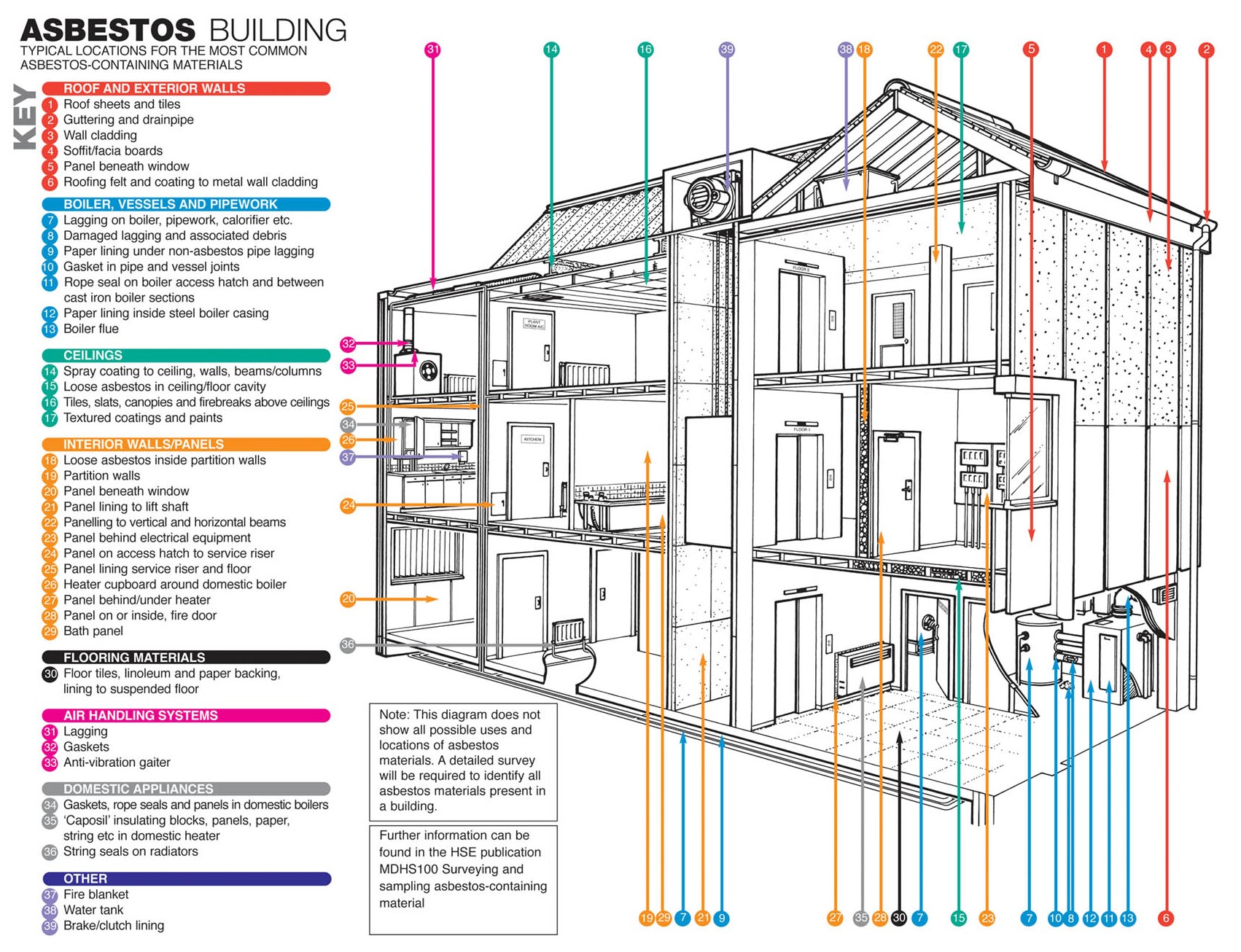|
Asbestos is a notorious contaminant that could be present in any home built before 1978. It is a naturally occurring mineral fiber that was first used by the Greek and Romans in the first century, and it has been widely used throughout the modern world in a variety of thermal insulators, including those in the form of paper wraps, bats, blocks, and blankets. However, it can also be found in a wide variety of other products too numerous to mention, including duct insulation and acoustical materials, plasters, siding, floor tiles, heat vents, and roofing products. Although perhaps recognized as being present in some documented forms, asbestos can only be specifically identified by laboratory analysis. The most common asbestos fiber that exists in residential products is chrysotile, which belongs to the serpentine or white-asbestos group, and was used in the clutches and brake shoes of automobiles for many years. However, a single asbestos fiber is said to be able to cause cancer, and is therefore a potential health threat and a litigious issue. Significantly, asbestos fibers are only dangerous when they are released into the air and inhaled, and for this reason authorities such as the Environmental Protection Agency [EPA] and the Consumer Product Safety Commission [CPSC] distinguish between asbestos that is in good condition, or non-friable, and that which is in poor condition, or friable, which means that its fibers could be easily crumbled and become airborne. BAI Inspection Services LLC. Performs AHERA/ASHARA good faith building survey in accordance with Asbestos Regulations (40CFR Chapter .1,Section 763.86) which includes but not limited to the following inspection work scope :
(a) Surfacing material. An accredited inspector shall collect, in a statistically random manner that is representative of the homogeneous area, bulk samples from each homogeneous area of friable surfacing material that is not assumed to be ACM, and shall collect the samples as follows: (1) At least three bulk samples shall be collected from each homogeneous area that is 1,000 ft or less, except as provided in section 763.87(c)(2). (2) At least five bulk samples hall be collected from each homogeneous area that is greater than 1,000 ft but less than or equal to 5,000 ft, except as provided in section 763.87(c) (2). (3) At least seven bulk samples shall be collected from each homogeneous area that is greater than 5,000 ft, except as provided in section 763.87(c) (2). (b) Thermal system insulation. (1) Except as provided in paragraphs (b) (2) through (4) of this section and section 763.87(c) an accredited inspector shall collect, in a randomly distributed manner, at least three bulk samples from each homogeneous area of thermal system insulation that is not assumed to be ACM. (2) Collect at least one bulk sample from each homogeneous area of patched thermal system insulation that is not assumed to be ACM if the patched section is less than 6 linear or square feet. (3) In a manner sufficient to determine whether the material is ACM or not ACM, collect bulk samples from each insulated mechanical system that is not assumed to be ACM where cement or plaster is used on fittings such as tees, elbows, or valves, except as provided under section 763.87(c)(2). (4) Bulk samples are not required to be collected from any homogeneous area where the accredited inspector has determined that the thermal system insulation is fiberglass, foam glass, rubber, or other non-ACBM. (5) Miscellaneous material. In a manner sufficient to determine whether material is ACM or not ACM, an accredited inspector shall collect bulk samples from each homogeneous area of friable miscellaneous material that is not assumed to be ACM. (6) Non friable suspected ACBM. If any homogeneous area of non friable suspected ACBM is not assumed to be ACM, then an accredited inspector shall collect, in a manner sufficient to determine whether the material is ACM or not ACM, bulk samples from the homogenous area of non friable suspected ACBM that is not assumed to be ACM.
The cost for this service is $475.00 service call plus $20.00 for each sample required to meet the aforementioned legal requirements. A written report with laboratory results with asbestos type,quantities or amount and recommendations is provided to the client electronically within three to four business days. Should no PACM (Potential Asbestos Containing Materials) be identified the only cost will be the service call and visual inspection survey and that statement of findings will be reflected in the body of the survey. The hazardous materials survey is required to help abatement contractors bid the abatement project and protect workers from exposure. |
Got a Question?
Do you have a question relating to real estate appraisals? We can help. Simply fill out the form below and we'll contact you with the answer, with no obligation to you. We guarantee your privacy.
